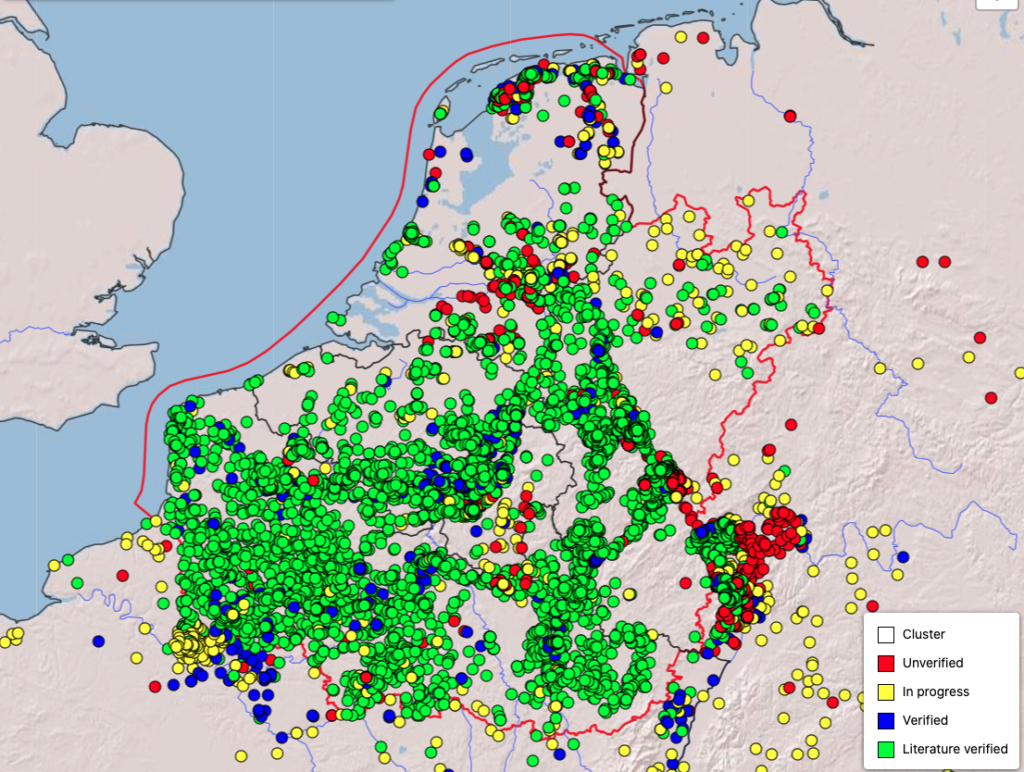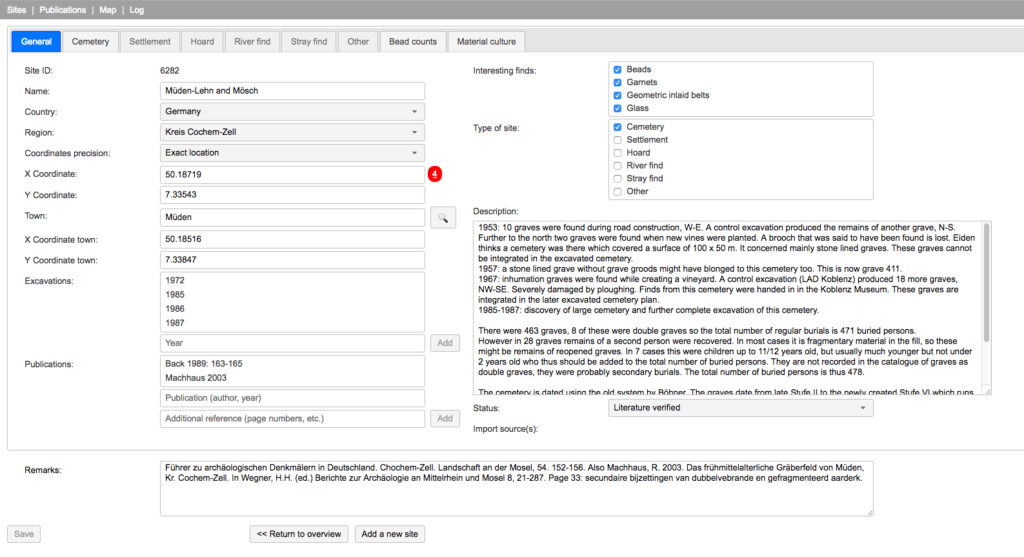The Rural Riches project is compiling a database on Merovingian archaeology in northern Gaul. We decided to create one encompassing database for all types of data we collect.
Custom built
The database is custom-made for the project by our database specialist David Schaper. It is accessible over Internet and allows for many persons wherever they are to work in it at the same time. For now the database serves only our project members and affiliated members who make their databases available to us. Later it will be accessible for other interested scholars (with passwords to see all data) and a wider audience (with some data not available to protect sites).

The core of the database is the Site Database in which evidence on all cemeteries/grave finds, settlements, stray finds, hoards, river finds and other (indeterminate) sites in the research area is collected. The amount of information per site had to be controllable and accessible. In contrast to earlier attempts to create such a database we limited the amount of data per site. However, we still record a substantial amount of data so as to be able to evaluate sites on the basis of the evidence in the database. In a later phase of the project we can explain in more detail the structure of the database. The various fields in the database already allow to create first distribution patterns of sites on the basis of different criteria necessary to analyse the nature of the dataset and the way it came about. This allows for a first evaluation of the biases in the dataset (research intensity, different landscape conditions, urbanisation etc.). The site database will also be important to the lay of the land research within the project.
Extensive bibliography
Another element which will probably be considered very useful by interested scholars, is a very extensive bibliography. For the moment we can search in it on author’s names but we will have to create other search possibilities such as year of publication. We also add for internal use PDF’s of the publications when available. It is thus not only a bibliography but also a library on Merovingian archaeology. We have to see whether it will be possible to make this available to every one because of possible copyrights.
Detailed information
We just started to create the next component of the database: information on specific material culture categories and activities. After long discussions between all members of the team and David Schaper we decided on creating various parts of the database geared to the research in the project. It is of course not possible to record all evidence on the topics suggested of all sites. A series of cemeteries and settlements will be selected to study in more detail. Of course, other scholars who are allowed to enter the database can enlarge the database by adding new sites.
One of the recorded activities is craft production. Martine van Haperen and Line van Wersch are using this evidence to study craft production in Merovingian northern Gaul.
Another aspect is the recording of numbers of beads and the presence of specific types of beads on all sites (the main bead count). Moreover, we will record the presence of series of beads and their characteristics in a considerable number of sites. Beads are important to the research by Mette Langbroek on exchange.
In order to study changes in ritual repertoires we will create the possibility to record a large number of variables important to the study of ritual in individual graves. This is important to the research by Femke Lippok.
In order for Jip Barreveld to analyse the nature of towns and the elite we decided to record as many inscriptions as possible from the research area. This part of the database has already been created and Jip is filling it with data.
In order to study rural wealth we will record a number of categories of objects such as glass vessels and brooches. We are at the moment preparing those parts and hope from the 1st of April 2019 to start filling this database on the basis of existing catalogues with the help of research assistants.
A comprehensive overview
Of course no database is perfect and we keep on improving its structure and content and we hope that later on other scholars will continue to do so. We reserved some money to keep it in working order after the end of the project. What ever its possible shortcomings we ourselves are already very exited about it. At last after so many years there will be a quite comprehensive overview of Merovingian archaeology in northern Gaul!!
In this post we feature some screenshots of the database. Above is the present distribution map. The colours have only meaning to the project members. Green means that the site record has sufficiently been dealt with (like the Müden one), blue is a record in progress, red is a record with yet insufficient information (to be checked), yellow is an overlap between various sites. As everyone can see we still have to record many sites in northwestern France (any help of those who know is welcome). Below is the first page of a cemetery entry. In this case Müden (Lehn and Mosch) in the Moselle valley.
In a next post we will explain the GIS environment we create
